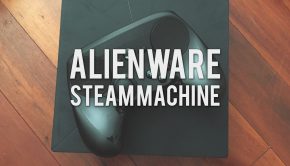Gabe Newell talks Valve economics
Gabe Newell, the managing director at Valve, is perhaps one of the most influential people in the PC gaming industry today. Recently, he discussed modern video game economics at a Seattle conference. GeekWire has posted an edited transcript of that conversation, which sheds some fascinating insight into the economic experiments Valve conducts on its Steam platform. Read on for the main highlights.
Newell says that “piracy is not a pricing issue. It’s a service issue. The easiest way to stop piracy is not by putting antipiracy technology to work. It’s by giving those people a service that’s better than what they’re receiving from the pirates.” He goes on to say that many people claimed Steam wouldn’t succeed in Russia because of its reputation for high piracy rates, but Russia is now one of Steam’s largest European markets. “The people who are telling you that Russians pirate everything are the people who wait six months to localize their product into Russia. … It doesn’t take much in terms of providing a better service to make pirates a non-issue.”
Varying the price of a game without an announcement or promotion results in perfectly elastic pricing (that is, gross revenue stays constant). However, coupling a game sale with promotion (for example, the Steam weekend sales you see every so often) and a 75 percent price reduction resulted in a gross revenue increase of a factor of 40 (4000%). In testing this promotion with their own games and third-party titles, Newell says they have seen the same pricing phenomenon, and 25/50/75 percent price reductions “very reliably generate different increases in gross revenue.”
Lastly, Newell discusses an interesting difference between saying a game is free vs. free to play. Read his comments below:
The most recent thing that also is really puzzling is that we made products available for free on numerous occasions, without significantly impacting the audience size. We recently said, we’re now going to do something different, we’re not only going to signal that it’s free but we’re going to say, ‘it’s free to play,’ which is not really a pricing signal, even though that’s what you would ordinarily think it is. And our user base for our first product that we made free to play, Team Fortress 2, increased by a factor of five. That doesn’t make sense if you’re trying to think of it purely as a pricing phenomenon.
Why is free and free to play so different? Well then you have to start thinking about how value creation actually occurs, and what it is that people are valuing, and what the statement that something is free to play implies about the future value of the experience that they’re going to have.
And then the conversion rate, when we talk to partners who do free-to-play, a lot of people see about a 2 to 3 percent conversion rate of the people in their audience who actually buy something, and then with Team Fortress 2, which looks more like Arkham Asylum in terms of the user profile and the content, we see about a 20 to 30 percent conversion rate of people who are playing those games who buy something.
Hats off (see what I did there?) to Valve for hitting an apparent home run with TF2’s free-to-play strategy, but even they don’t fully understand why they’ve been so successful. “We don’t understand what’s going on,” Newell admits. “All we know is we’re going to keep running these experiments to try and understand better what it is that our customers are telling us. And there are clearly things that we don’t understand because a simple analysis of these statistics implies very contradictory yet reproducible results.”
After reading over Newell’s comments, it’s not hard to figure out why Valve is in the healthy position it enjoys today. Valve is actively working to find business models that generate profitable returns, while also benefiting the consumer. Keep fighting the good fight, Gabe.
Source: GeekWire





3 Responses to Gabe Newell talks Valve economics